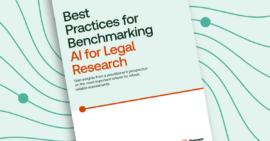More than a year since the first case of COVID-19 was confirmed in Victoria and with the national deficit in the 2020/2021 financial year expected to be $161 billion, governments at all levels have been, and still are, looking to all measures to revive Australia’s economy.
Unsurprisingly, construction and infrastructure are being viewed as some of the key avenues through which Australia can literally build its way out of recession. Following the urgings from industry groups, governments from most States and Territories have implemented changes to accelerate planning assessments for infrastructure projects and development opportunities.
Legal Insight talks to Jacinta Studdert, Valencia Govender and Peter Lochore, contributing authors to Planning Law in Australia, about the changes to the planning approvals processes and the potential issues that may arise from the acceleration of assessments with a particular focus on NSW and Western Australia.
The changes to the Approvals Processes
In Western Australia, changes were made to the Planning and Development Act 2005 in July2020 to create a new pathway for “significant developments” and gave the Western Australian Planning Commission (WAPC) decision-making authority for development applications of state significance. Peter stressed that for any application to be considered “significant”, it had to be “a non-warehouse development valued at $5 million or more in the country or $20 million or more in Perth”. Further, he pointed out that the WA Premier also has the opportunity, on the recommendation of the Minister for Planning, to refer other development proposals to the WAPC as development applications of state significance above what would be considered “significant developments”.
Additionally, a new Part 10B was inserted into Schedule 2 of the Planning and Development (Local Planning Schemes) Regulations 2015 in April 2020 to give the Minister for Planning the power to issue exemptions to planning requirements under local planning schemes while a state of emergency declaration is in force under the Emergency Management Act 2005. Peter emphasised that this power, while temporary, was particularly useful in allowing the Minister to “remove the need to seek planning approval for a range of developments such as development for health related purposes associated with a response to COVID-19 and works to adapt a business to meet COVID-19 operating conditions” and drive commercial resurgence.
RELATED: High-Level Explainer: Changes to the NSW Environmental Planning and Assessment Act 1979
In New South Wales however, Jacinta and Valencia were careful to underscore the fact that there had been no changes to the Environmental Assessment and Planning Act 1979 to effect a streamlining of planning approvals. Rather, the NSW government has implemented the Planning System Acceleration Program (PSAP), comprising the Priority Assessment Program (PAP), the Council Accelerated Assessment Program and the Accelerated Infrastructure Fund (AIF), to achieve the fast tracking of the approvals process.
The PAP, Jacinta and Valencia observed, “focus not only on projects near finalisation in the planning system but also at longer term, public and private projects earlier in the planning system” in setting the criteria by which applications could be assessed as eligible for fast tracking across the State. On the other hand, the AIF is explicitly targeted at high growth areas in Sydney to support the delivery of community infrastructure and encourage investment in the construction of new homes and the development of areas zoned for industrial or similar purposes.
The criteria for the eligibility of projects to be fast tracked includes: projects that contribute to the delivery of the strategic objectives of the State government; plans offering significant public benefits such as open and green space, community developments or environmental protection and enhancement; ventures that make an overwhelming positive impact on the economic development of the State or region to assist with the recovery from the pandemic; and specifically under the Council Accelerated Assessment Program, developments unique to each Local Government Area that will help stimulate local and regional economic activity.
Jacinta and Valencia did highlight that the Minister for Planning and Public Spaces has recently proposed changes to the State Environmental Planning Policy (Exempt and Complying Development Codes) (Codes SEPP) that would “make it easier for businesses in industrial and business zones to set up new premises, change or add additional uses, build and renovate and operate longer hours without the need for a development application provided that they comply with the Codes SEPP”.
The differences for legal practitioners to note
Clearly, the changes that have been made to the approvals processes in both jurisdictions do not affect the requirements of the respective Acts that must be complied with for approval. Instead it is, as Jacinta and Valencia state, “a change in how the Department of Planning, Industry and Environment is allocating its resources and changing its processes to accelerate assessment and determination of Development Applications in the system”. Likewise, in WA, where development applications are largely determined by local governments and development assessment panels, Peter noted that “WAPC is now the planning decision-maker” for applications reallocated to the significant development pathway.
While the PAP adopts a case management approach to projects to speed up assessment by providing pathways for issues resolution including executive oversight, schedule management and risk mitigation, Jacinta and Valencia argued that the most significant departure from the normal approval process in NSW is that contemplated in relation to data centres. Under the proposed changes to the Codes SEPP, “data centres could be set up as a complying development which will remove the need for lengthy planning approvals for development where the impacts can be managed by meeting the rules set out in the policy”, they maintained.
Jacinta and Valencia also advised that a new class of appeals in the Land and Environment Court has been proposed, designed to ensure planning proposals considered by the Land and Environment Court are consistent with strategic plans and the appeal does not influence the strategic planning vision for an area.
In addition, Peter advised practitioners to bear in mind that the WAPC has an extremely broad decision-making discretion and called particular attention to three aspects of the accelerated process–
- the WAPC is allowed to take account of matters normally irrelevant in planning decisions;
- the WAPC is explicitly freed from needing to comply with a raft of existing planning policies; and
- even after the WAPC grants approval, there is power for the State (via the Governor) to amend or cancel the approval within listed constraints.
Potential issues in accelerating Development Applications
Jacinta and Valencia acknowledged that, with the acceleration of the identification of projects for prioritisation as well as the assessment of Development Applications, concerns that the process does not ensure enough time to give proper consideration to the decision itself (including the conditions to be imposed in the Development Application and associated licences issued) might arise.
They also recognised that there would be heightened concerns that the required public participation in the application has not been complied with adequately or that due process is not being followed. This would leave the decision on the application susceptible to legal challenge.
“Challenges bring uncertainty, delays, costs and impacts on resources. Bad decisions impact on confidence in the planning system and can also adversely impact on the environment”, they said.
Jacinta and Valencia also suggested that capacity and resourcing are possible issues that Councils could face. They indicated that the State Government had intended the Council Accelerated Assessment Program to counter these problems through the re-prioritisation, not the addition, of resources.
Peter added, that for WA, there is a risk of conflict if the WAPC can disregard certain planning policies, but others cannot. Although he did quickly direct attention again to the new insertions to the Planning and Development Act 2005 as they included de-confliction provisions designed to alleviate that risk.
“There are processes to stop certain actions proceeding if they will conflict with a WAPC approval. The Minister for Planning is empowered to give a direction to a person or body not to perform a function, or to perform that function so as not to conflict with the WAPC approval. An affected owner can ask the Minister to make an order using that power”.
The successes so far
Australia’s economy has bounced back better than initial predictions had indicated. According to the ABS, the seasonally adjusted estimates for the value of non-residential building approved rose 59.4% and the unemployment rate decreased to 5.6% in March 2021 while the Australian economy rose 3.1% in seasonally adjusted chain volume measures in the December 2020 quarter. The argument may therefore be made that these changes have definitely had an impact on the Australian economy. In NSW alone, 100 projects were fast tracked through PSAP between April and October last year which has resulted in over $25 billion in economic investment.
Final considerations
There can be little doubt that Australia, and the world at large, still has a long way to go before things settle into a semblance of normality. With the pandemic still raging, it is clear that every opportunity to encourage economic recovery ought to be pursued.
However, Peter cautioned that while generally streamlining processes is to be encouraged, this must not be at the cost of important heritage protections. He observed that the WA Government has, thus far, appeared to not have achieved any tangible improvements to ensure that all parties, including Aboriginal communities and stakeholders, are adequately consulted in development processes since the blasting of the Juukan Gorge.
Perhaps, in light of the potential issues raised, and with the $500,000 earmarked in the federal budget to increase Indigenous heritage protection through Australia’s environmental protection laws, we ought to hasten slowly in choosing the route back to economic health.


